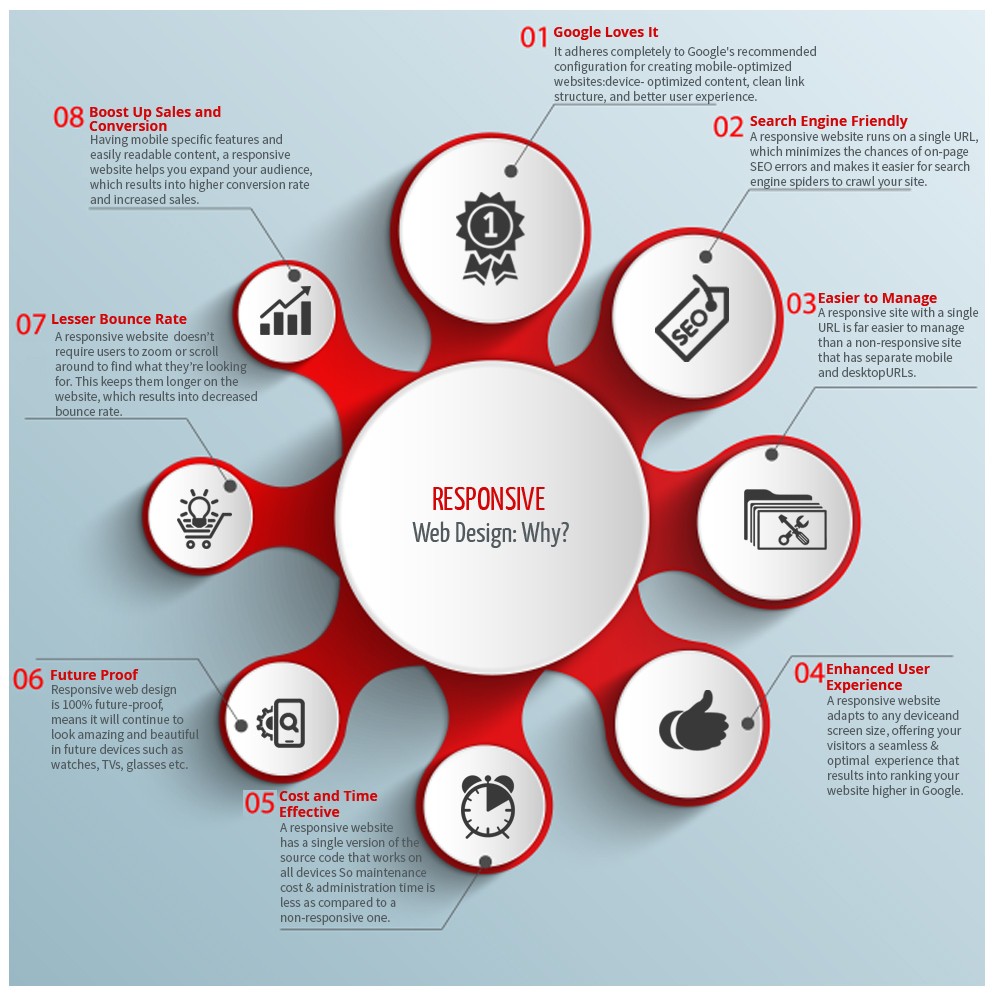Fundamental Facets Of Web Design: Standards For Developing A User-Centric Site
Fundamental Facets Of Web Design: Standards For Developing A User-Centric Site
Blog Article
Write-Up Created By-McKnight Ehlers
When it comes to web site style, making sure user-friendliness is essential. From responsive design to structured navigating, every element plays an important role in developing a site that deals with your audience's requirements. Yet what concerning the finer information that can make or break a customer's surfing experience? Remain tuned as we reveal some often-overlooked suggestions that can elevate your site's functionality to the next level, making it truly stand out in the digital landscape.
Relevance of Responsive Style
Receptive layout is a crucial aspect of modern-day site growth. Ensuring Recommended Reading is responsive methods that it can adjust to various display sizes and devices, supplying a smooth experience for individuals.
With the raising use of smartphones and tablets to access the net, having a responsive layout is important for reaching a broader target market. It aids in improving customer experience by making your website simple to browse and continue reading any type of gadget.
Furthermore, responsive design can favorably impact your online search engine positions, as search engines like Google prioritize mobile-friendly sites. By having a responsive style, you're also future-proofing your website, as new gadgets with varying screen sizes continue to emerge.
Simplify Navigation Framework
To enhance user experience and promote very easy access to info on your web site, simplifying the navigation framework is vital. When developing your site, focus on developing a clear and instinctive navigating food selection that helps site visitors locate what they're seeking promptly.
Limit the variety of food selection things to the basics, organizing related pages with each other to stay clear of overwhelming individuals. Use detailed tags that clearly suggest the content of each web page, making it less complicated for customers to recognize where each link will take them.
Think about executing dropdown menus for subcategories to prevent jumbling the major navigation bar. Additionally, include a search bar plainly on the page for individuals who like searching for specific info.
Prioritize mobile responsiveness in your navigating style to make sure very easy accessibility on all devices.
Maximize Page Load Rate
Improving web page tons rate is vital for preserving site visitors on your web site. Slow-loading web pages irritate individuals and can lead to high bounce rates. To maximize page tons speed, begin by enhancing pictures. Press pictures without jeopardizing quality to reduce their documents dimensions.
In addition, make it possible for web browser caching to save frequently accessed resources locally, accelerating tons times for returning site visitors. Minify CSS, JavaScript, and HTML files by getting rid of unneeded personalities, comments, and formatting, improving lots speed.
Consider making use of a material shipment network (CDN) to disperse your website's content across several servers worldwide, minimizing latency for individuals accessing your site from different areas. Last but not least, limit making use of third-party scripts and plugins, as they can significantly affect tons times.
Final thought
To conclude, by integrating receptive style, streamlining navigation, and enhancing page load rate, you can create an user-friendly internet site that attract a broader target market and improves customer experience. These essential elements guarantee that site visitors can conveniently access and browse your site across different tools, resulting in enhanced engagement and satisfaction. By concentrating on these essential facets, you can develop a successful internet site that keeps users returning for even more.
